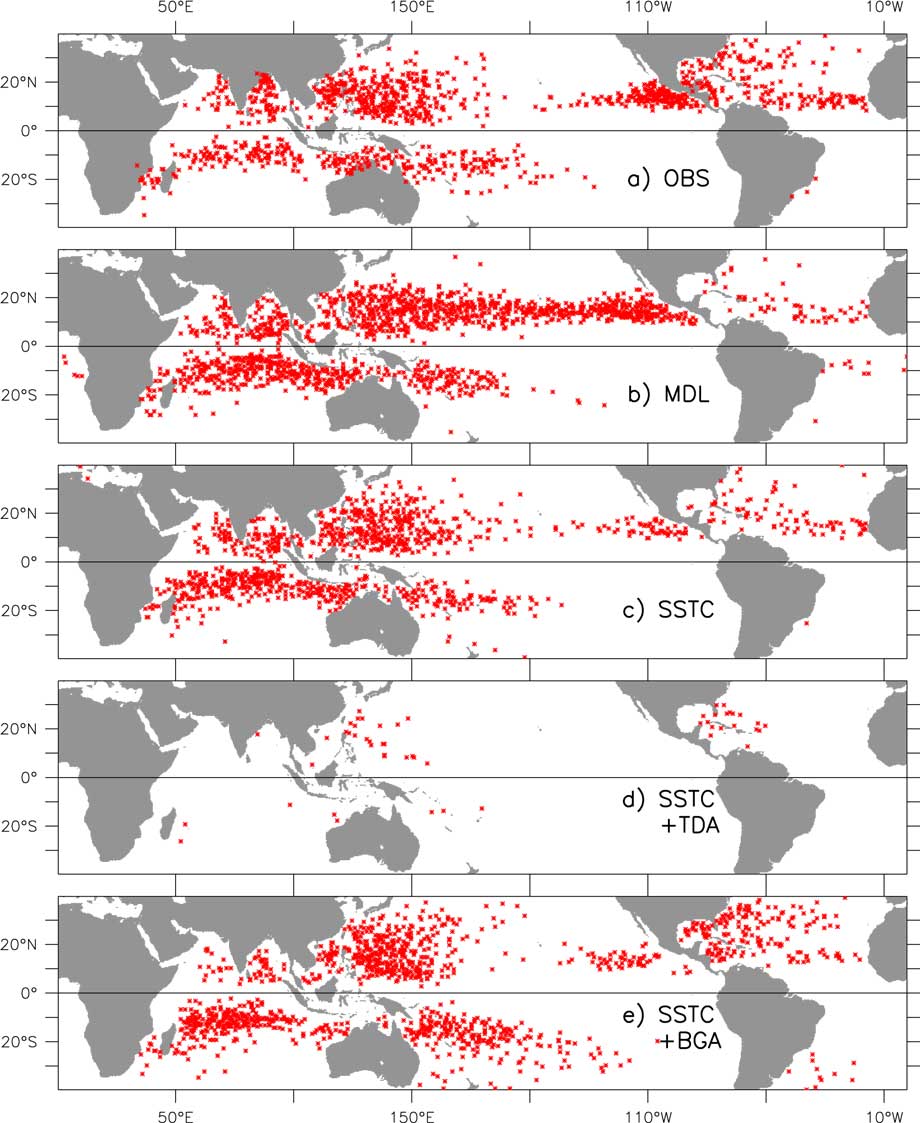September 17th, 2014
Key Findings
- A novel initialization method used with a high-resolution model reconstructs historical tropical cyclone (TC) statistics more successfully than traditional initialization methods.
- This new method can reduce the model forecast errors by allowing continuous interactions of tropical cyclones with the large-scale background.
- The new model initialization can facilitate seamless weather-climate predictions.
Shaoqing Zhang, Ming Zhao, S.-J. Lin, Xiaosong Yang and Whit Anderson. Geophysical Research Letters. DOI:10.1002/2013GL058879.
Summary
In order to produce better seasonal-to-interannual climate predictions, GFDL scientists explored improvements in the method of initializing a high-resolution coupled model. Traditionally, when observations are assimilated into a high-resolution coupled model, small-scale cyclones tend to get filtered out in the process of making corrections to the large-scale background. GFDL scientists pioneered a method of processing the large-scale background and the small-scale perturbations separately in a cyclone-permitting model.
Successively-corrected large-scale background can modulate small scale perturbations and thus allows models to retrieve the observed cyclone statistics that, in return, improve ocean state estimates. The improved ocean initial conditions together with the continuous interactions of cyclones and background flows are expected to reduce model forecast errors.
Combining correct tropical cyclone statistics with convection-permitting cyclone initialization, the new high-resolution model initialization opens a door for seamless weather-climate predictions.



